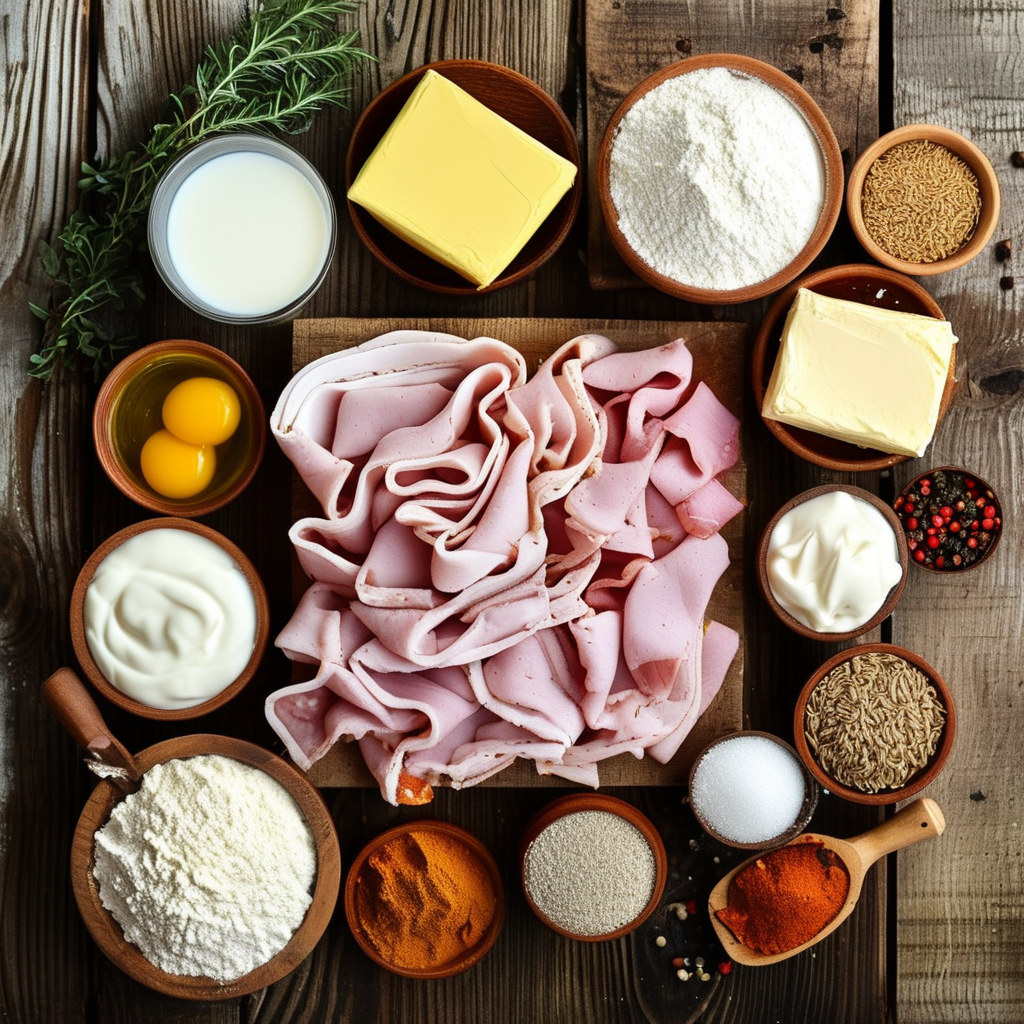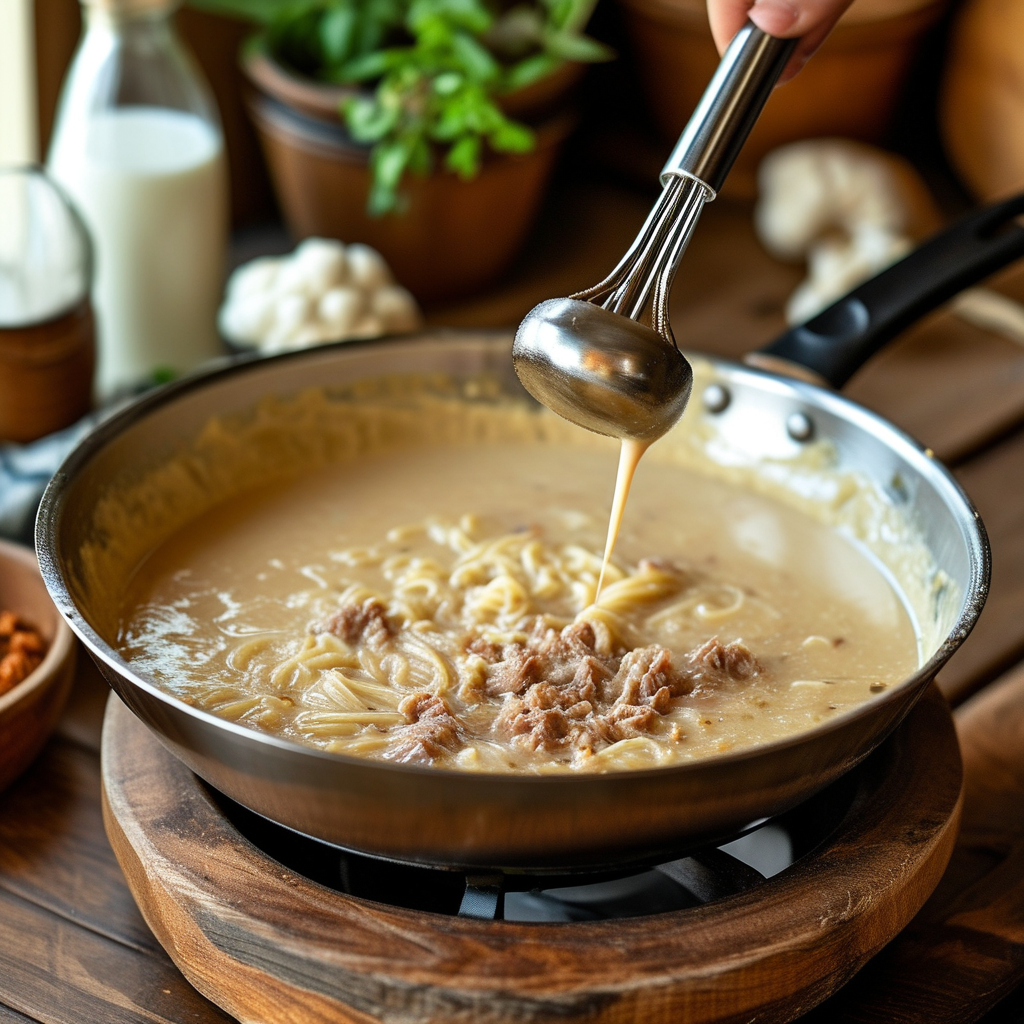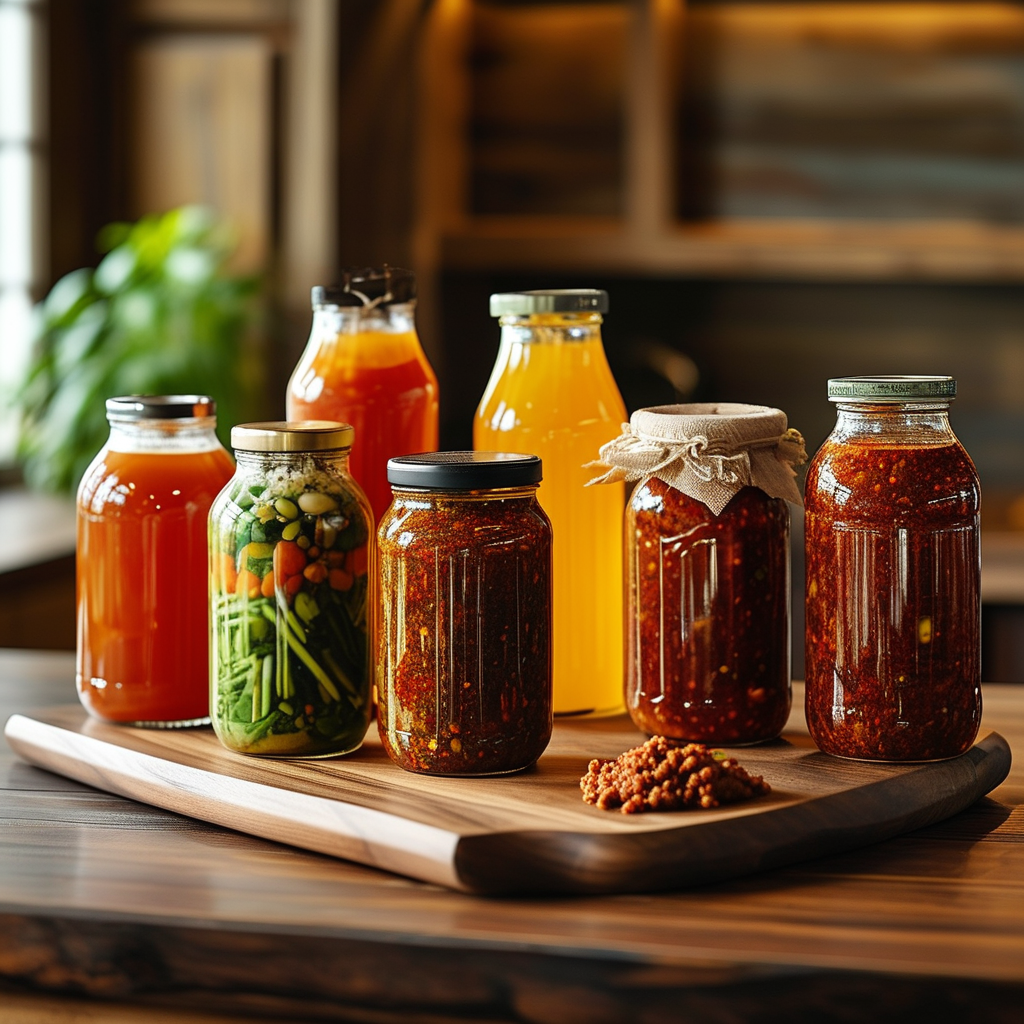In the heart of Southern cuisine lies the beloved Sawmill gravy, a creamy companion to biscuits and gravy. This Sawmill gravy recipe without sausage caters to meat-free preferences while preserving the rich and comforting essence of traditional Sawmill gravy. Let’s explore how to whip up this delightful dish!

Traditionally made with animal fats and drippings, Sawmill gravy can easily be adapted to suit various dietary needs while still capturing that classic taste. For a deeper dive into Southern comfort food, check out this Madame Cristo Grilled Ham and Cheese.
Many experience the savory delight of Sawmill gravy, making it a staple in their homes. Now, with effortless modifications, you can make sausage-free gravy that everyone will adore. If you love pairing your gravy with a warm, hearty dish, consider checking out this Sensational Chicken Noodle Soup!
Origins and History of Sawmill Gravy
The roots of Sawmill gravy extend back to the rustic kitchens of the South, where it was originally created to utilize leftover meats and cooking fats. While it is a ubiquitous addition to breakfast tables, variations have sprung up across different regions in the United States. The traditional recipe has seen numerous transformations into modern reinterpretations reflecting personal tastes while still honoring its rich heritage.
Key Historical Facts
- Utilized in early American Southern cooking.
- Popular among lumberjacks and laborers, hence the name.
- Variations exist across households, with each family adding their unique twist.
Ingredients for Sawmill Gravy
To create the perfect gravy from this Sawmill gravy recipe without sausage, you’ll need the following core ingredients:
- All-purpose flour
- Vegetable oil or butter
- Milk (or plant-based alternatives)
- Seasonings (salt, pepper, garlic powder)

When selecting ingredients, always opt for high-quality items to ensure the best flavor. For those avoiding meat, consider plant-based substitutions that still give you the creamy texture you crave.
Step-by-Step Preparation
Making this Sawmill gravy recipe without sausage is easier than you might think! Follow this simple step-by-step guide:
- Start by heating a saucepan over medium heat and add your vegetable oil or butter. Allow it to warm.
- Sprinkle in the flour while continuously stirring to create a roux. Cook until golden brown (about 2-3 minutes).
- Gradually whisk in the milk, stirring constantly. This prevents lumps and ensures a smooth gravy.
- Season with salt, pepper, and garlic powder to taste.
- Continue cooking until your gravy thickens (about 5-7 minutes). Adjust the consistency by adding more milk if too thick.

Consistency Tips
For a rich texture, remember that the roux is the foundation. If you desire a thicker gravy, let it simmer a little longer or incorporate a cornstarch slurry if needed.
Serving Suggestions
Nothing complements this Sawmill gravy recipe without sausage like fresh, flaky biscuits, but you can also get creative:
- Serve over mashed potatoes for a comforting meal.
- Drizzle over roasted or sautéed vegetables for a tasty twist.
- Enhance your breakfast bowls with a hearty scoop of gravy.

Variations of Sawmill Gravy
Explore delightful variations for your sausage-free gravy:
- Vegetarian or vegan alternatives: Use almond or oat milk in place of dairy milk.
- Spicy versions: Add crushed red pepper flakes for a kick.
- Regional twists: Incorporate unique spices reflective of your culinary preferences.

Common Mistakes and How to Avoid Them
Even seasoned cooks can make mistakes; here’s how to avoid them with this recipe:
- Don’t rush the roux; over- or undercooking it can alter the flavor.
- Prevent lumps by whisking continuously when adding milk.
- For overly salty gravy, adding a splash more milk can help balance flavors.
Storage and Reheating Tips
Leftover Sawmill gravy can be stored with ease:
- Keep in the fridge in an airtight container for up to 3 days.
- Reheat gently over low heat, adding a splash of milk if needed.
- For longer storage, freeze portions in freezer bags for up to 3 months.
Nutritional Information
A typical serving of this Sawmill gravy contains:
- Calories: ~150 per serving
- Fat: 10g, depending on butter or oil choice.
- Carbohydrates: 12g from flour.
For those mindful of dietary restrictions, consider using gluten-free flour or low-calorie milk options to adapt this recipe.
FAQs About Sawmill Gravy Without Sausage
Here are some frequently asked questions about our Sawmill gravy recipe without sausage:
- What can I use instead of sausage in Sawmill gravy? Consider using miso paste or smoked paprika for flavor.
- How can I thicken my Sawmill gravy? Use additional flour or a cornstarch slurry.
- Can I make this Sawmill gravy ahead of time? Yes, just store and reheat as needed.
- Is Sawmill gravy gluten-free? Use gluten-free flour in your recipe.
- How do I store and reheat leftover gravy? Store in an airtight container and reheat gently.
Creating a delightful Sawmill gravy without sausage is straightforward, with versatile options that cater to various dietary needs. Try this comforting dish for your next meal!
Conclusion
In conclusion, this Sawmill gravy recipe without sausage proves to be a versatile and delicious addition to any meal. With its rich flavor and simple preparation, why not try making it at home? Share your experiences and variations with this scrumptious gravy today!
Further Reading
If you’re interested in exploring more Southern dishes, check out our comprehensive guide on Sawmill Gravy. For breakfast ideas, don’t miss our Family Brunch Guide!